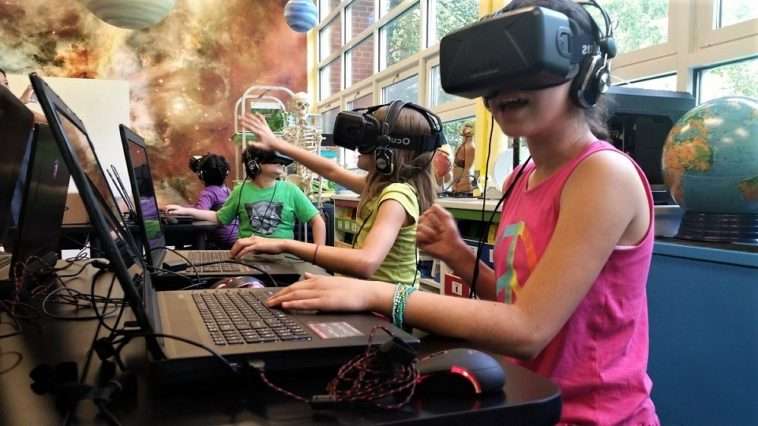Virtual Reality is becoming a very popular technology in the wake of high-profile product launches like the Oculus Rift and Google Cardboard, but because it is still relatively new it may not be something that you have experienced yet. In this blog you will get to know what VR technology is and what impact will it have on education.
What is virtual reality?
You’ll probably never go to Mars or swim with dolphins or run an Olympic 100 meters race or sing on stage with the Beatles. But through virtual reality you might be able to do these things without even leaving your home.
Virtual reality refers to a three dimensional, computer generated environment which can be explored and interacted with by a person. It is actually creating a simulation of a real world experience that a person can enter and leave at any time using technology. VR technology is believable. It is immersive and interactive and has many applications not only in gaming but also in fields like military, healthcare, business, education, entertainment, sports etc.
Virtual reality and education
Education is another area which has adopted virtual reality for teaching and learning. For example, astronomy students can learn about the solar system and how it works by physical engagement with the objects within. They can move planets, look around at stars and track the progress of a comet. This enables them to see how abstract concepts work in three dimensional environment which makes them easier to understand and retain. It also helps the teacher to present complex data in an accessible way to students which is both fun and easy to learn.
VR is also used in many classes to collaboratively construct architectural models, recreation of historic sites and other spatial renderings. Instructors use VR to engage students in topics like Literature, Economics and Physics by offering a deeply immersive sense of place and time.
In September 2015, Google launched its Pioneer Expeditions that turned out to be an education game changer. Under this program, thousands of schools around the world received a kit, for a day, containing everything a teacher needed to take to his class on a virtual trip: Asus smartphones, a tablet for the teacher to direct the tour, a router that allows expeditions to run without an internet connection, a library of 100+ virtual trips(from the great wall of China to Mars) and Google Cardboard viewers that turn smartphones into VR headsets.
Such global distribution of VR content will undoubtedly influence a major shift in education sector promising a remarkable change not only in the traditional classroom teaching, but also in other aspects. It will also help us in bridging cultures and fostering understanding among young students, as it will soon be possible for a second grade class in the U.S. to participate in a virtual trip with a second grade class in India.
By- Prachi Pahuja, Zailet.


